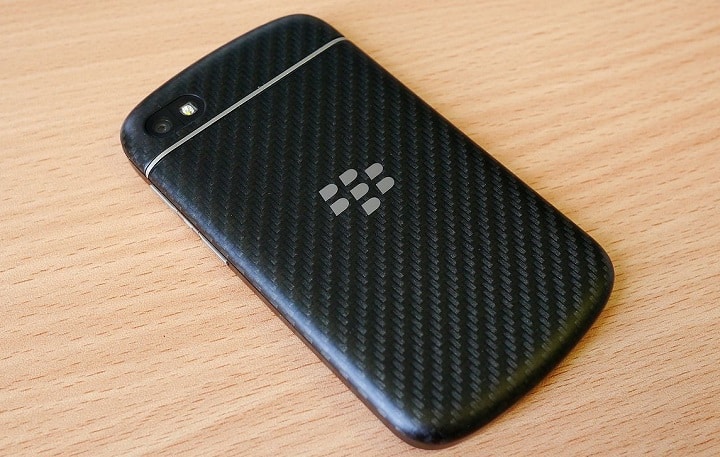- Blackberry Updates For Macbook Air
- Blackberry Updates
- Blackberry World Update
- Blackberry Updates For Macbook
Using BlackBerry Link, you will be able to reload your device software to a full OS and, if needed, download any OS updates from your carrier. A Mac OS X version of. BlackBerry Access™ enables enterprise mobile app users to securely access intranet and popular web-based productivity applications using their device of choice. With BlackBerry Access secure mobile browser, you get:. The next generation of BlackBerry’s secure mobile browser built on the Black.

<img src='http://rimhelpblog.files.wordpress.com/2010/12/blackberry-desktop-mac-11.jpg?w=800' alt=' />
Have you ever wondered how to update your BlackBerry® smartphone while using a Mac®? How about removing an application that you do not use anymore? The Mac version of BlackBerry® Desktop Software is the perfect solution for that!
You can download the software quickly and easily at the BlackBerry Desktop Software website. After installing the software and following these steps, you’ll be able to update your BlackBerry to the latest device software.
Updating BlackBerry Device Software
1. Connect your BlackBerry smartphone to your Mac computer via USB.
2. On your Mac computer, in the Applications folder, click BlackBerry Desktop Manager.
3. Click on Backup at the top of BlackBerry Desktop Software and follow the instructions. This will insure that all of your data is backed up prior to proceeding with the update.
4. Click the Applications icon at the top of the screen.
5. In the list of available applications, select the check box beside one or more applications.
6. Click Start.
<img src='http://rimhelpblog.files.wordpress.com/2010/12/blackberry-desktop-mac-21.jpg?w=800' alt=' />
7. If you’re enterprise-activated with a BlackBerry® Enterprise Server, you will receive the following prompt. Press Continue.
<img src='http://rimhelpblog.files.wordpress.com/2010/12/blackberry-desktop-mac-31.jpg?w=800' alt=' />
8. Then the follow screens will appear until the completion:
<img src='http://rimhelpblog.files.wordpress.com/2010/12/blackberry-desktop-mac-41.jpg?w=800' alt=' />
<img src='http://rimhelpblog.files.wordpress.com/2010/12/blackberry-desktop-mac-51.jpg?w=800' alt=' />
Blackberry Updates For Macbook Air

<img src='http://rimhelpblog.files.wordpress.com/2010/12/blackberry-desktop-mac-61.jpg?w=800' alt=' />

<img src='http://rimhelpblog.files.wordpress.com/2010/12/blackberry-desktop-mac-71.jpg?w=800' alt=' />
9. The BlackBerry Device Software update will be complete once the following prompt appears.

<img src='http://rimhelpblog.files.wordpress.com/2010/12/blackberry-desktop-mac-81.jpg?w=800' alt=' />
Updating applications:
You can update the BlackBerry Device Software and other device applications to use new features that are available in the most current version.
1. Connect your BlackBerry smartphone to your Mac computer.
2. On your Mac computer, in the Applications folder, click BlackBerry Desktop Manager.
3. Click the Applications icon at the top of the screen.
4. Click Check for Updates.
5. If updates appear in the list, select one or more applications to update.
6. Perform any of the following actions:
– To check for other versions of the selected applications, click Show other versions.
<img src='http://rimhelpblog.files.wordpress.com/2010/12/blackberry-desktop-mac-91.jpg?w=800' alt=' />
– To back up and restore device data while updating your device applications, select the Back up and restore device data check box.
– To back up and restore third-party applications while updating device applications, select the Back up and restore third-party applications check box.
<img src='http://rimhelpblog.files.wordpress.com/2010/12/blackberry-desktop-mac-101.jpg?w=800' alt=' />
7. Click Start or Downgrade (if you are returning to a previous version of the application).
8. Complete the instructions on screen.
Deleting applications:
1. Connect your BlackBerry smartphone to your Mac computer.
2. On your Mac computer, in the Applications folder, click BlackBerry Desktop Manager.
3. Click the Applications icon at the top of the screen.
4. Clear the check box beside one or more of the applications that you want to delete.
5. Click Start.
6. Complete the instructions on screen.
Blackberry Updates
Let us know what you think – and if you have any questions, please leave them in the comments and we will do our best to help!
Apple and Google announced they soon will release iOS 13 and Android Q, respectively. As with any major update, iOS 13 and Android Q will present IT challenges to support mobile workers on the new operating systems. Maintaining worker productivity via compatible business apps and securing your organization’s data remain top priorities.
Blackberry World Update
Here’s the good news: BlackBerry Enterprise Mobility Suite is prepared for these updates and we’ve made it easy for your IT team to support iOS 13 and Android Q’s end-user enhancements and enterprise capabilities. Our essential BlackBerry apps have been updated and available in the App Store and on Google Play today. The BlackBerry portfolio goes beyond basic MDM by enabling a layered approach to mobility that helps meet the most demanding security requirements, all managed from a single console in BlackBerry UEM:
- BlackBerry Enterprise Mobility Suite software supports iOS 13 and Android Q and new features on release day
- Updated BlackBerry apps are available now in the App Store and on Google Play
On day zero, we will support iOS 13 and Android Q with our world class containerization, rich app-specific policies, superior file security, enterprise-class productivity, and our diverse, flexible solutions portfolio, highlighting our leadership in enterprise mobility. We are making our entire portfolio ready at launch, as we continue to deliver true data security and productivity for iOS users both inside and outside the enterprise perimeter.

iOS 13
UEM on-prem and UEM Cloud will have day zero support for iOS 13. In early September, an update in the form of a maintenance release (MR1) for UEM v12.11 will be made available. This update will be required for day zero support of iOS 13 for UEM customers that meet any of the following conditions.
- Deployed UEM on-prem after July 1, 2019, and either use Apple’s Device Enrollment Program (DEP) for activations or use BlackBerry Secure Gateway (BSG)
- Have users with devices where UEM Client is activated after July 1, 2019, and the device is configured with a Dynamics profile with the “Require device management to use BlackBerry Dynamics apps” option enabled
Affected customers who are not able to upgrade to UEM v12.11 MR1 in advance of iOS 13 release can request a Quick Fix (QF) from Support for supported UEM versions (v12.9, v12.10). Please refer to KB000057749 for details. UEM Cloud customers will be automatically updated.
In September, an update to the UEM Client will be available which supports the iOS 13 dark mode but is otherwise not required for iOS 13 compatibility. In addition to compatibility support for iOS 13, new policies will be added with a policy pack without requiring a server or client-side update. These policies include:
- Allow Continuous Path Keyboard
- Allow Find My Device
- Allow Find My Friends
- Allow Wi-Fi Power Modification
Blackberry Updates For Macbook
Support for the User Enrollment feature of iOS 13 is targeted for a subsequent feature release of UEM.
Android Q
UEM on-prem and UEM Cloud will have day zero support for Android Q. In early September, an update in the form of a maintenance release for UEM v12.11 will be made available, and in early August, and an update to the UEM Client will be made available.
Both of these updates will be required for Android Q compatibility. UEM Cloud will be automatically updated to support Android Q; the UEM Client update is still required.
Prepare for the Update
Prepare today for the release of the operating systems. Be sure your users have the latest version of all apps, as many third-party apps will require updates to run properly on iOS 13 and Android Q. Most app updates will be downloaded automatically to a user’s device, provided they have auto-update enabled.
At a minimum, it is worthwhile to communicate the importance of using the latest apps for iOS 13 and Android Q, and to encourage users to update manually. Ensure you are using the latest version of BlackBerry UEM. Older releases are not compatible with Apple’s new operating system.
Finally, BlackBerry recommends that users install the latest versions of BlackBerry’s client apps, which have already been updated in the App Store and on Google Play. These include:
- Blackberry Work
- BlackBerry UEM Client
- BlackBerry Workspaces
- BlackBerry Access
- BlackBerry Connect
- BlackBerry Share
- Docs To Go
- BlackBerry Tasks
- BlackBerry Notes
To support our ISV partners and customers who are building custom apps on BlackBerry Dynamics, the Dynamics SDK for Android v6.0.1.83 with Android Q readiness support was released on July 24, 2019. The Dynamics SDK for iOS v.6.1.0.x with iOS 13 readiness support was released on August 30, 2019. BlackBerry ISV partners are also ready to support your upgrade. Be sure to also contact ISVs directly before upgrading to iOS 13 and Android Q – it’s important to confirm readiness prior to a major update.
BlackBerry is dedicated to supporting and securing every major OS in enterprise across our portfolio for iOS 13 and Android Q. It’s one of the reasons we were recognized as a Leader for the fourth consecutive year in the recent release of the 2019 Gartner Magic Quadrant for Unified Endpoint Management Tools report.
